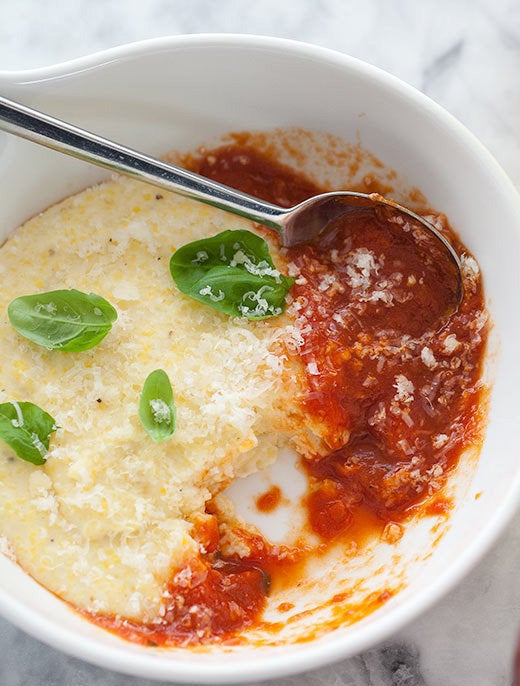
Occasionally, you'll mention an ingredient to someone and it will be met with wide eyes, vacuum lungs and flailing hands. "No, no, no. I don't cook that." We've seen this happen with polenta one too many times, and we want to give you all a big hug through the internet. We can do this, and quite frankly, you owe it to your fall and winter to do this. Polenta, like its American cousin grits and other lesser known porridges of all kinds, has a power to comfort and fortify unlike many other foods. Polenta is a like a food blanket, in the best possible sense of that strange idea.
Why do people go all weak in the knees when they think about cooking polenta? Maybe it's that a lump could form. Maybe it's because someone told them once that they needed to stir constantly for two hours. Maybe they scorched the bottom of a pan once and never forgot it. Whatever the reason, we're all going to get over it today, because we're going to get to the bottom of how to cook polenta, with the only polenta recipe you'll ever need. Afterward, we hope, you'll only go all weak in the knees for good, buttery, comforting polenta-eating reasons.
The Only Polenta Recipe You'll Ever NeedAdapted from Molly Wizenberg of Orangette, who adapted hers from "The Zuni Café Cookbook" by Judy Rodgers.
5 cups water1 cup coarsely ground polenta2 cloves garlic, minced1 1/2 teaspoons kosher salt, or to taste2 Tablespoons unsalted butter, or to taste2 Tablespoons sour cream (or creme fraiche if you feel fancy)
Bring the water, garlic and salt to a simmer in a large, heavy-bottomed pan (2 quarts should do it). Whisk in the polenta slowly and stir until the water returns to a simmer. Knock the heat down until the polenta bubbles occasionally (think of your seventh grade science class' volcano video, it should bubble like the lava, once or twice every few seconds), and cook uncovered, for 45 minutes to an hour, stirring frequently, to make sure it doesn't stick to the bottom and scorch. If it gets too thick, add a spoonful of water and mix the hell out of it (but it probably won't).
Taste it. Add another pinch of salt (if it needs it) and the butter. Stir again to incorporate. Isn't it starting to look creamy and wonderful?
Here is where the magic happens: Turn off the heat. Cut a sheet of parchment, and press it down onto the surface of the polenta. Cover the pot. Set a pot that is wider and deeper than your polenta pot over low heat, and fill it with a few inches of water, so that the water just barely simmers. Place a ramekin in the center, and on top, your polenta pot. BOOM. You have just made a makeshift double-boiler. (If you are fancy and have a double-boiler, you can just use that. I am not/do not.)
Let the polenta rest over indirect heat for 30 minutes to a few hours, depending on the timing of the rest of your meal. This lets the grains of polenta absorb all the moisture and fat they possibly can, so they are tender, creamy and amazing.
After your polenta has rested and the rest of your meal is ready to go, pop the pot back onto direct heat, stir in the sour cream/creme fraiche and warm all the way through. Serve the polenta hot with roasted mushrooms, short rib ragu, raw heirloom tomatoes and burrata, spicy greens, etc., etc., into infinity.
Serves 4 to 8, and also makes brilliant leftovers.
